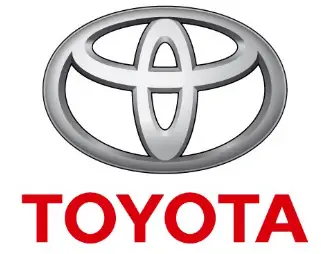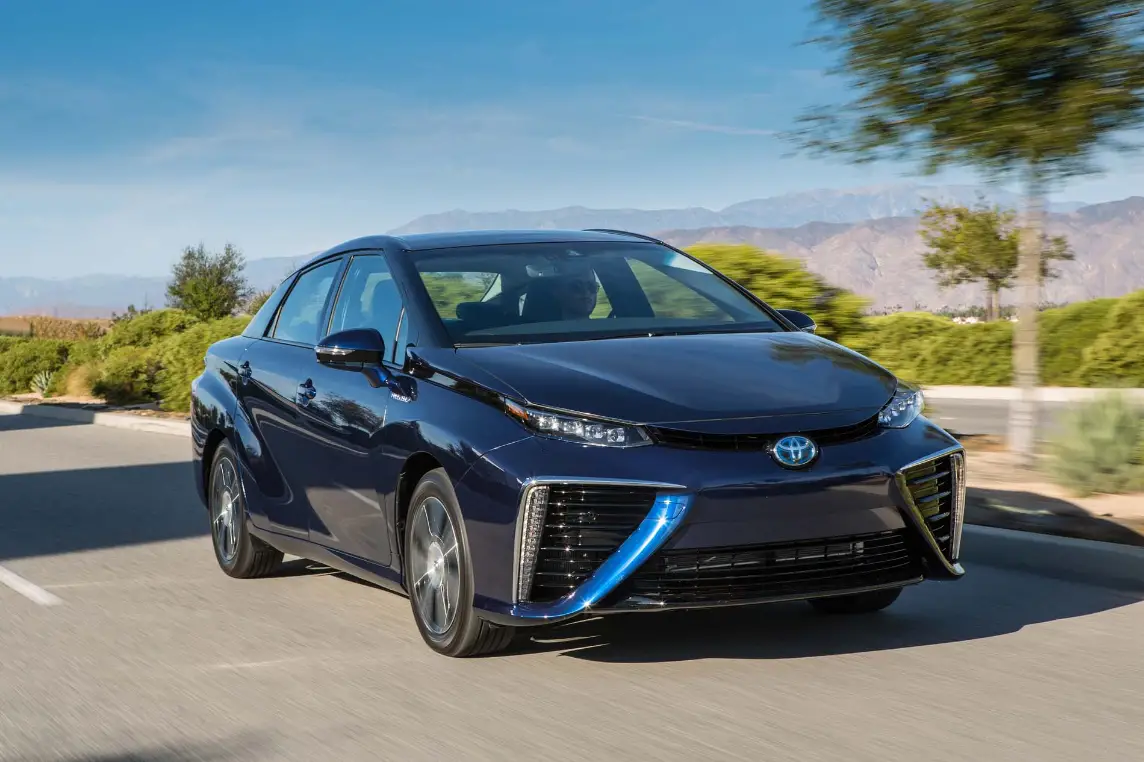
2019 Toyota Mirai Owner’s Manual
Welcome to the 2019 Toyota Mirai Owner’s Manual. This is a complete guide to learning and getting the most out of owning the innovative Toyota Mirai. As the happy owner of a Mirai, you have taken the first step into the future of car technology. This manual has been carefully put together to tell you everything you need to know about your hydrogen fuel cell electric vehicle (FCEV) so that you can use its new features and cutting-edge systems with confidence. This manual will be your trusted friend on the road to sustainable and eco-friendly driving. It will help you learn about the Mirai’s unique propulsion system, safety features, upkeep needs, and advanced technologies. Explore the 2019 Toyota Mirai’s options, and we’ll give you the information you need to use it to its fullest and help make the world a better place.
For safe driving
For safe driving, adjust the seat and mirror to an appropriate position before driving.
Correct driving posture
- Adjust the angle of the seat-back so that you are sitting straight up and so that you do not have to lean forward to steer. (P. 151)
- Adjust the seat so that you can depress the pedals fully and so that your arms bend slightly at the elbow when gripping the steering wheel. (P. 151, 160)
- Lock the head restraint in place with the center of the head restraint closest to the top of your ears. (P. 158)
- Wear the seat belt correctly. (P. 30)

Correct use of the seat belts
Make sure that all occupants are wearing their seat belts before driv-ing the vehicle. (P. 30) Use a child restraint system appropriate for the child until the child becomes large enough to properly wear the vehicle’s seat belt. (P. 56)
Adjusting the mirrors
Make sure that you can see the rear of the vehicle clearly, by adjust-ing the inside and outside rear view mirrors properly. (P. 162, 164)
WARNING
Observe the following precautions. Failure to do so may result in death or serious injury.
- Do not adjust the position of the driver’s seat while driving.
- Doing so could cause the driver to lose control of the vehicle.
- Do not place a cushion between the driver or passenger and the seatback. A cushion may prevent correct posture from being achieved, and reduce the effectiveness of the seat belt and head restraint.
- Do not place anything under the front seats.
- Objects placed under the front seats may become jammed in the seat tracks and stop the seat from locking in place. This may lead to an acci-dent and the adjustment mechanism may also be damaged.
- Always observe the legal speed limit when driving on public roads.
- When driving over long distances, take regular breaks before you start to feel tired.
- Also, if you feel tired or sleepy while driving, do not force yourself to con-tinue driving and take a break immediately.
Seat belts
Make sure that all occupants are wearing their seat belts before driving the vehicle.
Correct use of the seat belts
- Extend the shoulder belt so that it comes fully over the shoulder, but does not come into contact with the neck or slide off the shoulder.
- Position the lap belt as low as possible over the hips.
- Adjust the position of the seat-back. Sit up straight and well back in the seat.
- Do not twist the seat belt.

Fastening and releasing the seat belt
- To fasten the seat belt, push the plate into the buckle until a click sound is heard.
- To release the seat belt, press the release button.

Adjusting the seat belt shoulder anchor height (front seats)
- Push the seat belt shoulder anchor down while pressing the release button.
- Push the seat belt shoulder anchor up.
- Move the height adjuster up and down as needed until you hear a click.

Seat belt comfort guide (rear seats)
For children or smaller-than-aver-age people, slide the seat belt comfort guide forward so that the shoulder belt does not sit close to the person’s neck. Return the seat belt by hand, after it has been used, and check that the belt is stored properly. Return the comfort guide to its orig-inal position.
Seat belt pretensioners
The pretensioners help the seat belts to quickly restrain the occu-pants by retracting the seat belts when the vehicle is subjected to certain types of severe frontal col-lision or a vehicle rollover. The front seat belt pretensioners also activate when the vehicle is subjected to certain types of severe side collision. The pretensioners do not activate in the event of a minor frontal impact, a minor side impact or a rear impact.
- Emergency locking retractor (ELR)
The retractor will lock the belt during a sudden stop or on impact. It may also lock if you lean forward too quickly. A slow, easy motion will allow the belt to extend so that you can move around fully. - Automatic locking retractor (ALR)
When a passenger’s shoulder belt is completely extended and then retracted even slightly, the belt is locked in that position and cannot be extended. This feature is used to hold the child restraint system (CRS) firmly. To free the belt again, fully retract the belt and then pull the belt out once more. - Child seat belt usage
The seat belts of your vehicle were principally designed for persons of adult size.- Use a child restraint system appropriate for the child, until the child becomes large enough to properly wear the vehicle’s seat belt. (P. 56)
- When the child becomes large enough to properly wear the vehicle’s seat belt, follow the instructions regarding seat belt usage. (P. 30)
- Replacing the belt after the pretensioner has been activated
If the vehicle is involved in multiple collisions, the pretensioner will activate for the first collision, but will not activate for the second or subsequent collisions. - Seat belt extender
If your seat belts cannot be fastened securely because they are not long enough, a personalized seat belt extender is available from your Toyota dealer free of charge.
WARNING
Observe the following precautions to reduce the risk of injury in the event of sudden braking, sudden swerving or an accident. Failure to do so may cause death or serious injury.
- Wearing a seat belt
- Ensure that all passengers wear a seat belt.
- Always wear a seat belt properly.
- Each seat belt should be used by one person only. Do not use a seat belt for more than one person at once, including children.
- Toyota recommends that children be seated in the rear seat and always use a seat belt and/or an appropriate child restraint system.
- To achieve a proper seating position, do not recline the seat more than necessary. The seat belt is most effective when the occupants are sitting up straight and well back in the seats.
- Do not wear the shoulder belt under your arm.
- Always wear your seat belt low and snug across your hips.
- Pregnant women
Obtain medical advice and wear the seat belt in the proper way. (P. 30) Women who are pregnant should posi- tion the lap belt as low as possible over the hips in the same manner as other occupants, extending the shoulder belt completely over the shoulder and avoid- ing belt contact with the rounding of the abdominal area. If the seat belt is not worn properly, not only the pregnant woman, but also the fetus could suffer death or serious injury as a result of sudden braking or a colli- sion. - People suffering illness
Obtain medical advice and wear the seat belt in the proper way. (P. 30)
WARNING
- When children are in the vehicle
Do not allow children to play with the seat belt. If the seat belt becomes twisted around a child’s neck, it may lead to choking or other serious injuries that could result in death.
If this occurs and the buckle cannot be unfastened, scissors should be used to cut the belt. - Seat belt pretensioners
- Do not place anything, such as a cushion, on the front passenger’s seat. Doing so will disperse the passenger’s weight, which prevents the sensor from detecting the passenger’s weight properly. As a result, the seat belt pretensioner for the front passenger’s seat may not activate in the event of a collision.
- If the pretensioner has activated, the SRS warning light will come on. In that case, the seat belt cannot be used again and must be replaced at your Toyota dealer.
- Adjustable shoulder anchor (front seats)
Always make sure the shoulder belt is positioned across the center of your shoulder. The belt should be kept away from your neck, but not falling off your shoulder. Failure to do so could reduce the amount of protection in an accident and cause death or serious injuries in the event of a sudden stop, sudden swerve or accident. (P. 31) - Seat belt damage and wear
- Do not damage the seat belts by allowing the belt, plate, or buckle to be jammed in the door.
- Inspect the seat belt system periodically. Check for cuts, fraying, and loose parts. Do not use a damaged seat belt until it is replaced. Damaged seat belts cannot protect an occupant from death or serious injury.
- Ensure that the belt and plate are locked and the belt is not twisted.
- If the seat belt does not function correctly, immediately contact your Toyota dealer.
- Replace the seat assembly, including the belts, if your vehicle has been involved in a serious accident, even if there is no obvious damage.
- Do not attempt to install, remove, modify, disassemble or dispose of the seat belts. Have any necessary repairs carried out by your Toyota dealer. Inappropriate handling may lead to incorrect operation.
FAQ
Answer: The 2019 Toyota Mirai is a hydrogen fuel cell electric vehicle (FCEV).
Answer: Hydrogen is a clean and sustainable fuel source, emitting only water vapor as a byproduct.
Answer: “Mirai” means “future” in Japanese, reflecting Toyota’s vision for hydrogen-powered vehicles.
Answer: The hydrogen fuel cell in the Mirai combines hydrogen and oxygen to generate electricity, which powers the vehicle’s electric motor and produces water as the only emission.
Answer: The 2019 Toyota Mirai has an estimated driving range of around 312 miles (502 kilometers) on a full tank of hydrogen.
Answer: Refueling the Mirai’s hydrogen tank typically takes about 3 to 5 minutes, similar to refueling a gasoline vehicle.
Answer: The Mirai produces only water vapor, making it a zero-emission vehicle in terms of greenhouse gases and pollutants.
Answer: The availability of the Mirai varies, but it was primarily available in select regions of the United States, Japan, Europe, and certain other countries.
Answer: Mirai owners might be eligible for government incentives, tax breaks, and access to carpool lanes to promote the adoption of clean energy vehicles.
Answer: The Mirai’s electric motor produces approximately 151 horsepower (113 kW) and 247 lb-ft (335 Nm) of torque.
Answer: The Mirai offers comparable acceleration and performance to traditional gasoline vehicles, while providing the benefits of zero-emission driving.
Answer: The 2019 Mirai comes equipped with features such as adaptive cruise control, lane departure warning, and automatic emergency braking for enhanced driver safety.
Answer: The Mirai contributes to sustainability by using hydrogen as a fuel source, which can be produced from renewable sources and reduces reliance on fossil fuels.
Answer: Challenges include the limited availability of hydrogen refueling infrastructure and the energy-intensive process of producing and transporting hydrogen.
Answer: The technology of the 2019 Mirai can pave the way for cleaner transportation options, decrease greenhouse gas emissions, and provide an alternative to traditional internal combustion engine vehicles.
Useful Link
2020 Toyota Mirai Owner’s Manual
Toyota Corolla Hybrid 2021 User Manual

